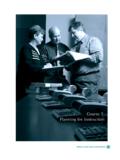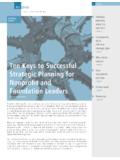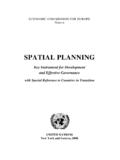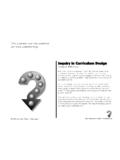Transcription of Effective Communication Styles Inventory Scoring …
1 Effective Communication Styles Inventory Scoring Form A DIRECTIONS: Print and complete this Scoring form to determine your Communication style. 1. Reflect on your personal characteristics as you read across each of the 15 lines below and circle two descriptive words that best describe you on each line. This is a forced choice, so sometimes all four words will describe you, but you MUST select only two. Sometime none of the four words best describes you, however, you MUST select two words on each line. 2. After completing line 15, count the number of words circled on each line, (as you read across from left to right) there must only be 2 words circled on each line. 3. In each column (x, z, w, and y), count the number of words circled and indicate the total circled in the box provided. 4. Your total scores for each column represent four points (w, x, y, z), take these four points and graph them on the Scoring grid which follows.
2 When plotting your points, remember zero is in the middle of the graph no matter which direction you are plotting (left, right, up, or down). 5. Draw a four sided figure to connect the four points (in other words when you connect your four points they MUST make a square, rectangle, in other words a four sided figure. DO NOT DRAW A KITE. The largest area (length x width) of the four sided figure drawn represents your dominant Communication style as indicated by the words you selected. If you disagree about your style, go back and review the words you selected. 6. Read the summary page for information about your style. X Z W Y 1. disputes the issue unruffled focused sociable 2.)
3 Will take a chance flexible rational sympathetic 3. spur-of-the-moment prudent composed extraverted 4. directs others asks pensive lively 5. decisive ponders diligent gregarious 6. takes control collaborates independent amicable 7.
4 Self-assured noncommittal orderly demonstrative 8. convincing open-minded thorough free-thinking 9. will fight for will defend Effective good-hearted 10. wants to win hopeful pragmatic young-at-heart 11. eager diplomatic systematic innovative 12.
5 Confident accepting pains taking high-strung 13. dominant mild plans talkative 14. insistent sensible exact helpful 15. urgent constant conventional good-natured =30 Scoring Grid Effective Communication Styles Inventory Summary THINKING/PLANNING DOING/DIRECTING ASK FOR: TELL ABOUT.
6 * data * progress to goals * information * actions required * facts * solutions to problems FOCUSED ON: FOCUSED ON: * process * task * task * goal * goal * winning/being successful * doing things the right way * making things happen UNDER STRESS: UNDER STRESS: * avoid * become autocratic and tell NEED/Like: NEED/Like.
7 * logical thinking * rational approach * options * directness * documentation * careful planning * flexibility * conciseness SUPPORTING/COLLABORATING VISIONING/CREATING ASK FOR: TELL: * information re: others skills/interests * visions * input * ideas * feedback * stories, analogies FOCUSED ON: FOCUSED ON: * people * big picture * relationships * models/theories/concepts * collaborations * bringing visions into reality * how situations feel UNDER STRESS: UNDER STRESS: * acquiesce or yield * blame others NEED/Like: NEED/Like.
8 * friendliness * inclusion * to understand how the details * participation * involvement fit their picture * innovation and creativity * others to handle the details





